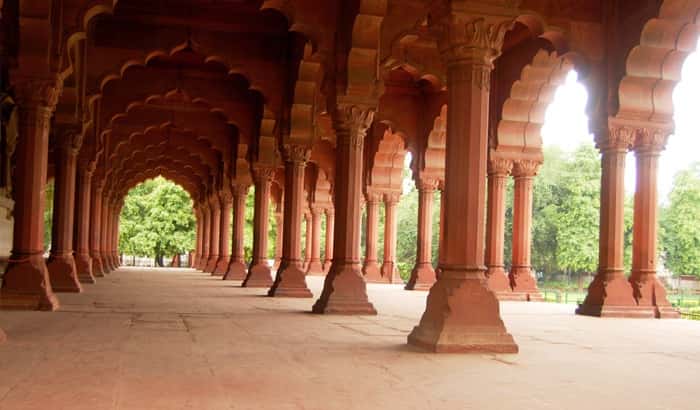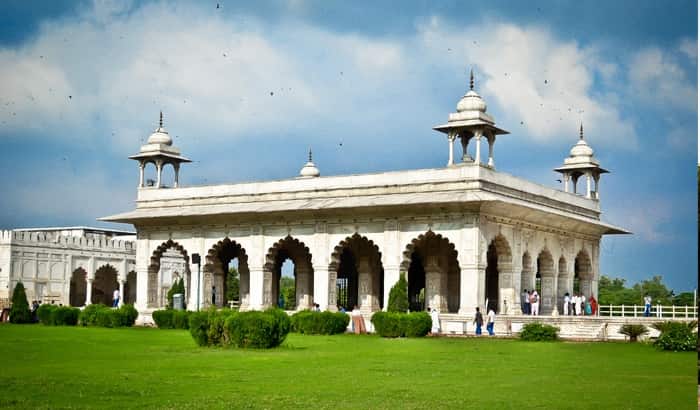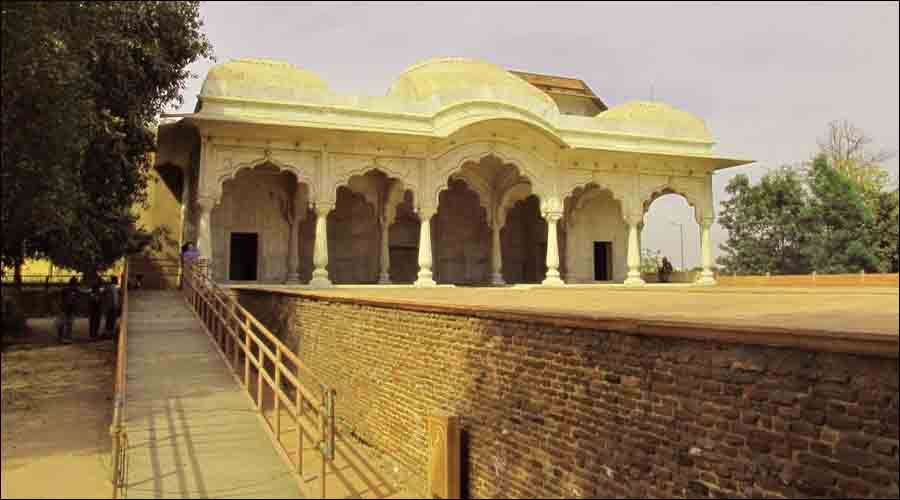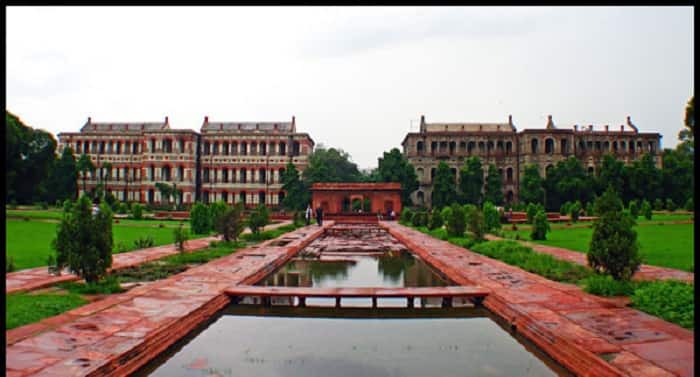The Red Fort, also known as the Lal Qila, is a dominant architectural masterpiece of India’s independence in Delhi whereby at the Lahori gate of the fort complex, the Prime Minister raises the flag of India and delivers a hopeful speech on the Independence Day. It is a fort complex of 17th century built on the Yamuna River by the Mughal emperor Shah Jahan in Delhi and is currently, a famous tourist spot. In 2007, it was also labeled as a UNESCO World Heritage Site.
History

The construction of this fort started in 1638 that was completed in 1648. The fort was referred as ‘Qila-i-Mubarak’ (blessed fort), as it served as the royal family’s residence. It was the palace for the Shah Jahan’s new capital, Shahjahanabad. After construction, many enhancements were done to the fort by the Emperor Shah Jahan, Aurangzeb, and later Mughal rulers. Critical modifications were performed on the site after the First War of Independence in 1857 during the British Rule.
Since its construction, the fort was occupied Shah Jahan after whom the Sikhs in 1783 occupied the Diwan-i-Aam, a famous site in the complex. The last Mughal emperor to take over the fort was Bahadur Shah II Zafar. After the defeat in 1857 national uprising, Zafar emptied the fort. Before 1857, the premises of Delhi Red Fort were the resident of around 3,000 people.
The fort was designated as the capital of the Mughals until 1857, when the British government in India expelled the Mughal emperor Bahadur Shah Zafar. Until India obtained its independence, the British regarded it as a military camp. After Independence, the fort was under the Indian Army until 2003.
Architecture
The layout of the Red Fort retains the traces of the Salimgarh Fort built adjacent in 1546. The outline and aesthetics of the fort symbolizes Mughal creativity, which was famous during the Emperor Shah Jahan’s period.
The Red Fort highlights the high-level artwork and ornamental work. The artwork is a mix of Persian, European, and Indian styles, which led to growth of unique, rich Shahjahani pattern. Red Fort is one of the national monuments of India, which beholds an elongated time of Indian history, architectural intellect, and fine sculpting. Even prior to the recognition of Indian monument of national heritage, plans were created to preserve the fort.
The walls of the fort are evenly decorated by heavy stringcourses. There are two major gates associated with these walls namely, the Delhi and the Lahore gates. The Lahore Gate represents the main entrance and is a way to a long bazaar street named the Chatta Chowk. The Chatta Chowk takes you to a large open space that passes the large north-South Street. This street previously divided the fort’s military functions at its west and the palaces at the east. The southernmost tip of this street is the Delhi Gate.
Tourists’ Attractions
There are important buildings inside the fort complex. Listed are those buildings.
Diwan-i-Aam

Is the huge pavilion for public royal spectators with a flamboyant throne-balcony (jharokha) reserved for the emperor? The site’s columns are decorated with gold and a gold and silver paling drew a line of demarcation between the throne and the viewers.
Diwan-I-Khas

It is a pavilion dressed in full marble, the pillars polished with floral sculpting, and the inlay work decorated with semi-precious stones.
Nahr-i-Behisht

Behind the emperor’s throne, are the beautiful imperial private apartments that comprise of a row of pavilions on a raised platform across the eastern boundary of the fort. These pavilions are linked through a water channel that is known as the Nahr-i-Behisht or the Stream of Paradise running in the middle of each of them. This water is of the river Yamuna that comes from a tower named the Shah Burj located at the northeastern side of the fort. This tower/palace is carved in such a way that imitates paradise, whose description is given in the Holy book Koran. In the Koran, a couplet about the palace says, “If there is a paradise on the Earth, it is here and only here”. The layout of the palace is planned considering the Islamic models, but each of the pavilions does exhibit the Mughal architectural style. This palace complex is regarded as one of the ideal prototypes of the Mughal artwork.
Zenanas and Rang Mahal

These are two southernmost pavilions of the palace. The Zenanas is known as the women’s quarters, the Mumtaz Mahal and now it is converted into a museum. The larger and rich Rang Mahal is popular since ages for its ceiling covered with the gold and the pool made up of marble where water comes from the Nahr-i-Behisht.
Moti Masjid

This Pearl Mosque is situated to the west of the hammam. This was one of the modern additions erected in 1659. This was a private mosque for Aurangzeb, who was the successor of Shah Jahan. The mosque is a small, three-domed architectural religious monument carved out of white marble with a three-domed screen stepping downwards to the courtyard.
Hayat Bakhsh Bagh

This is a large formal garden known as the Life-bestowing Garden to the north of the mosque. This garden cuts through the two equally divided channels of water. At the end of the north-south channel, a pavilion can be seen. One more piece of work can be seen at the middle of the pool, which is the place of confluence of the two channels. This work is the result of the efforts by the last emperor, Bahadur Shah, in 1842.
Sound and Light Show
This is a major tourist attraction that describes the Mughal incidents in the evenings.
Tea House
It is restaurant in the fort complex.
Blood Paintings Museum
This actually represents the young Indian martyrs and their stories.
Archaeological and Indian War Museums
These museums are dedicated to archeological discoveries and events of wars respectively.
Lahore Gate Entrance
This is entry point to reach the retail mall that is famous for its exclusive jewellery and crafts stores.








 Call
Call WhatsApp
WhatsApp Enquiry
Enquiry